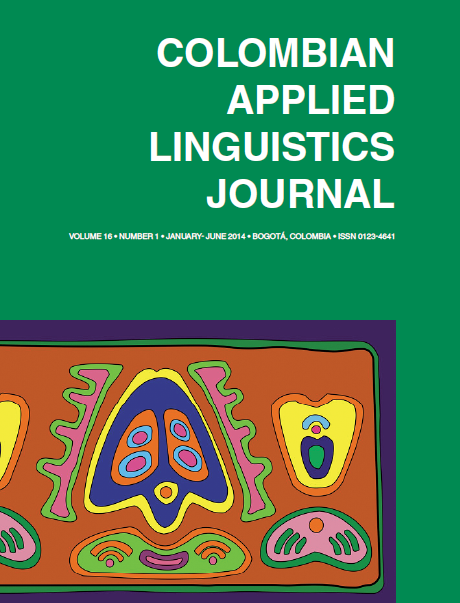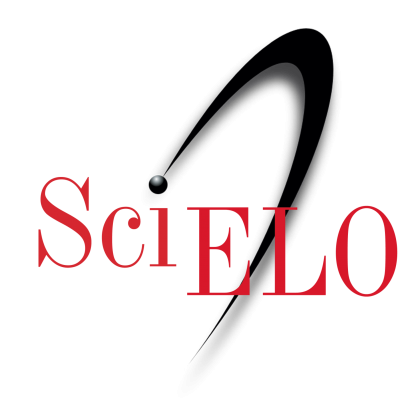DOI:
https://doi.org/10.14483/udistrital.jour.calj.2014.1.a09Published:
2014-01-01Issue:
Vol 16, No 1 (2014) January-JuneSection:
Reflections on PraxisUnderstanding a reader's attraction to a literary short text
La atracción de un lector hacia un texto literario corto
Keywords:
contexto, análisis del discurso, ficción, Hosseini, acto textual, pragmática (es).Keywords:
context, discourse analysis, fiction, Hosseini, pragmatics, speech act (en).Abstract (en)
The aim of this article is to understand why a reader may feel attracted to a short piece of fictional discourse. I analyse a short extract taken from Khaled Hosseini’s novel A Thousand Splendid Suns through the integration of different perspectives in discourse analysis. First, I analyse the text in terms of contexts of culture and situation including field, tenor, mode, participants’ social world, setting, channel, and key. In the second section, I attempt to examine the text line by line following my interdisciplinary framework of reference. Secondly, I offer a line-by-line analysis through Grice’s maxims, topicality, deixis, coding time, types of utterances and verbal processes, and metaphors. Through my analysis, I discovered that my attraction as a reader was based on the combination and integration of different textual devices and my personal interpretation of the pragmatics behind the text.
Abstract (es)
El propósito de este artículo es entender mi atracción como lector a una pequeña porción de un texto literario. En esta contribución analizo un extracto tomado de la novela en inglés A Thousand Splendid Suns del escritor Khaled Hosseini. El análisis es llevado a cabo a través de la integración de diferentes perspectivas en el análisis del discurso. Primeramente, analizo el texto en cuanto a los contextos de cultura y de situación, e incluyo campo, tenor, y modo, el universo social de los participantes, tiempo y espacio, canal, y formato. En segundo término, realizo un análisis linear apoyándome en las máximas de Grice, tema, ubicación, tiempo de codificación, tipos de enunciados, procesos verbales, y metáforas. A través de mi análisis concluyo que mi atracción como lector a este pasaje se basa en la combinación e integración de diferentes herramientas textuales y mi interpretación personal de la pragmática que subyace en el texto.
References
Barker, C., & Galasiński, D. (2001). Cultural studies and discourse analysis. London: Sage.
Birner, B.J. (2013). Introduction to pragmatics. Oxford: Wiley-Blackwell.
Bloor, M., & Bloor, T. (1995). The functional analysis of English. London: Arnold.
Bloor, M., & Bloor, T. (2007). The practice of critical discourse analysis. An Introduction. London: Hodder Arnold.
Brown, G., &Yule, G. (1983). Discourse analysis. Cambridge: Cambridge University Press.
Brown, P., & Levinson, S. (1987). Politeness: Some universals in language usage. In A. Jaworski & N. Coupland (Eds.). (1999), The discourse reader (pp. 321-335). London: Routledge.
Cook, G. (1994). Discourse and literature. Oxford: Oxford University Press.
Coulthard, M. (1985). An introduction to discourse analysis. Essex: Longman.
Davies, B. L. (2007). Grice’s cooperative principle: Meaning and rationality. Journal of Pragmatics, 39, 2308-2331.
Eggins, S. (2004). An introduction to systemic functional linguistics (2nd edition). London/New York: Continuum.
Ephratt, M. (2008). The functions of silence. Journal of Pragmatics, 40, 1909-1938.
Fairclough, N. (1999). Linguistic and intertextual analysis within discourse analysis. In A. Jaworski & N. Coupland (Eds.), The discourse reader (pp. 183-211). London: Routledge.
Fasold, R. (1990). Sociolinguistics of language. Oxford: Blackwell.
Gee, J.P. (2011). How to do discourse analysis: A toolkit. London: Routledge.
Gee, J.P., & Handford, M. (Eds.). (2012). The Routledge handbook of discourse analysis. Abingdon/New York: Routledge.
Halliday, M., & Mathiessen, C. (2004). An introduction to functional grammar (4th edition). London: Arnold.
Hyland, K. (2005). Metadiscourse. London: Continuum.
Ishihara, N., & Cohen, A.D. (2010). Teaching and learning pragmatics: Where language and culture meet. Harlow: Pearson.
Jaworski, A., & Coupland, N. (Eds.). (1999). The discourse reader. London: Routledge.
Kövecses, Z. (2010). Metaphor: A practical introduction (2nd edition). New York: Oxford University Press.
Lakoff, G. (1993). The contemporary theory of metaphor. In A. Ortony (Ed.), Metaphor and thought (2nd edition, pp. 202-251). Cambridge: Cambridge University Press.
Lam, M. (2009). The politics of fiction: A response to new orientalism in type. Journal of Multicultural Discourses, 4, 257-262.
Lecercle, J-J. (1999). Interpretation as pragmatics. New York: Macmillan.
Levinson, S. (1983). Pragmatics. London: Cambridge University Press.
McCarthy, M. (1991). Discourse analysis for language teachers. Cambridge: Cambridge University Press.
Ndambuki, J., & Janks, H. (2010). Political discourse, women’s voices: Mismatches in representation. Critical Approaches to Discourse Analysis across Disciplines, 4, 73-92.
Paltridge, B. (2006). Discourse analysis: An introduction. London: Continuum.
Schiffrin, D. (1994). Approaches to discourse. Oxford: Blackwell.
Shawver, B. (2013). The language of fiction: A writer’s stylebook. Lebanon: UPNE.
Taboada, M.T. (2004). Building coherence and cohesion: Task-oriented dialogue in English and Spanish. Philadelphia: John Benjamins.
Teubert, W. (2010). Meaning, discourse, and society. Cambridge: Cambridge University Press.
Thomas, J. (1995). Meaning in interaction: An introduction to pragmatics. Essex: Longman.
Tsiplakou, S., & Floros, G. (2013). Never mind the text types, here’s textual force: Towards a pragmatic reconceptualization of text type. Journal of Pragmatics, 45, 119-130.
Vallée, R. (2008). Conventional implicature revisited. Journal of Pragmatics, 40, 407-430.
Verschueren. J. (1999). Understanding pragmatics. London: Arnold.
Vertommen, B., Vandendaele, A., & Van Praet, E. (2012). Towards a multidimensional approach to journalistic stance. Analyzing foreign media coverage of Belgium. Discourse, Context & Media, 1, 123-134.
Wooffitt, R. (2005). Conversation analysis and discourse analysis: A comparative and critical introduction. London: Sage.
How to Cite
APA
ACM
ACS
ABNT
Chicago
Harvard
IEEE
MLA
Turabian
Vancouver
Download Citation
Metrics
License
This work is licensed under a Creative Commons Attribution-NonCommercial-NoDerivatives 4.0 International License.
Attribution — You must give appropriate credit, provide a link to the license, and indicate if changes were made. You may do so in any reasonable manner, but not in any way that suggests the licensor endorses you or your use.
NonCommercial — You may not use the material for commercial purposes.
NoDerivatives — If you remix, transform, or build upon the material, you may not distribute the modified material.
The journal allow the author(s) to hold the copyright without restrictions. Also, The Colombian Apllied Linguistics Journal will allow the author(s) to retain publishing rights without restrictions.













.JPG)










